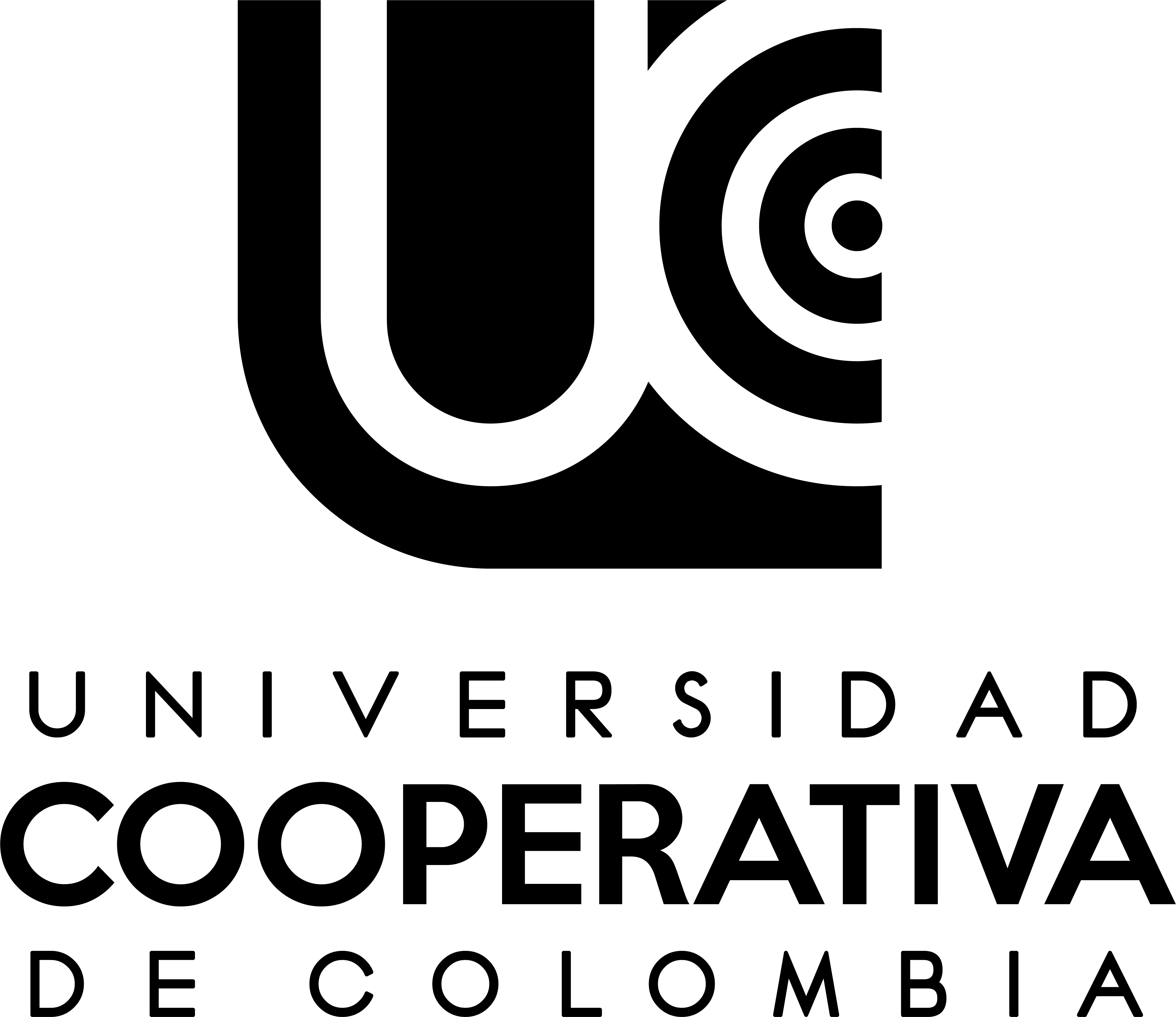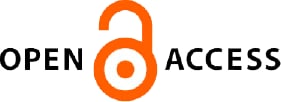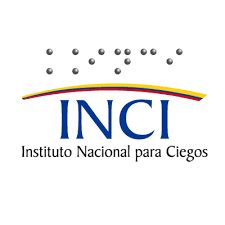Organizational structures and adaptation to changing environmental conditions : Challenges and implications

Universidad Distrital Francisco José de Caldas
Estudiante de Ingeniería Industrial.
email: lauragual12@gmail.com

Universidad Distrital Francisco José de Caldas
Estudiante de Ingeniería Industrial
email: lauragual12@gmail.com

Universidad Distrital Francisco José de Caldas
Doctora en Ciencias de la Dirección
email: lauragual12@gmail.com
Introduction: This article, prepared in 2017 at the Universidad Distrital Francisco José de Caldas, identifies some of the characteristics, advantages, and limitations of organizational structures that seek to increase the ability to adapt to changing environmental conditions.
Methodology: a) it is argued that business organizations are information processing systems; b) it is shown that organizational structures can be understood as information circulating networks; c) the research literature published in the 2010-2016 period is reviewed; it was methodically and exhaustively analyzed for trends, advances, methodology, future research, results, and conclusions in the twenty main journals of the Business, Management and Accounting category of Scimago; and d) research challenges and problems not yet overcome are set out.
Results: The characteristics, advantages, and limitations of organizational structures other than hierarchical control are identified. Future research projects in the design of organizational structures that increase the ability of the system to adapt to changing environmental conditions are planned. Conclusions: The ability to adapt linked to the processing of high volumes of information is a challenge faced daily by organizations which could be satisfactorily addressed by implementing flexible structures.
P. BeomCheol Kim, S. Kimb y S. Seongs, “Organi-zational Drivers and Outcomes of Casino Employees”, J. Hosp. Mark. Manag, pp. 2–21, 2016. [Online]. Disponible en https://www.cabdirect.org/cabdirect/abstract/20173147288
M. Sigala y O. Kyriakidou, “Creativity and innova-tion in the service sector”, Serv. Ind. J., vol. 35, pp. 297-302, 2015. [Online]. doi: https://doi.org/10.1080/02642069.2015.1010159
E. D. Pulakos, S. Arad, M. A. Donovan y K. E. Plamon-don, “Adaptability in the workplace: Development of a taxonomy of adaptive performance”, J. Appl. Psychol., vol. 85, pp. 612-624, 2000. [Online]. http://psycnet.apa.org/journals/apl/85/4/612/
N. Siggelkow y D. A. Levinthal, “Temporarily Divide to Conquer: Centralized, Decentralized, and Rein-tegrated Organizational Approaches to Exploration and Adaptation”, Organ. Sci., vol. 14, n.º 6, pp. 650-669, 2003. [Online]. doi: http://doi.org/10.1287/orsc.14.6.650.24840
O. Williamson, Markets and Hierarchies: Analysis and Antitrust Implications, Nueva York: The Free Press, 1975. [Online]. Disponible en http://garfield.library.upenn.edu/classics1988/A1988M191900001.pdf
D. J. Watts, Seis grados de separación. La ciencia de las redes en la era del acceso, Barcelona: Paidós, 2006. [Online]. Disponible en https://books.google.com.co/books?id=jt4ktVJ427QC&print-sec=frontcover&hl=es&source=gbs_ge_summa-ry_r&cad=0#v=onepage&q&f=false
I. Hofacker y R. Vetschera, “Algorithmical ap-proaches to business process design”, Comput. Oper. Res., vol. 28, n.º 13, pp. 1253-1275, 2001. [Online]. Disponible en doi: https://doi.org/10.1016/S0305-0548(00)00038-1
L. E. Bohórquez, “La comprensión de las organizaciones empresariales y su ambiente como sistemas de complejidad creciente: rasgos e implicaciones”, Rev. Ing., vol. 21, n.º 3, pp. 363-377, 2016. [On-line]. doi: https://doi.org/10.14483/udistrital.jour.reving.2016.3.a07
F. Aime, S. Humphrey, D. S. Derue y J. B. Paul, “The riddle of heterarchy: Power transitions in crossfunc-tional teams”, Acad. Manag. J., vol. 57, n.º 2, pp. 327-352, 2014. [Online]. doi: https://doi.org/10.5465/amj.2011.0756
B. R. Spisak, M. J. O’Brien, N. Nicholson y M. Van Vugt, “Niche construction and the evolution of lead-ership”, Acad. Manag. Rev., vol. 40, n.º 2, pp. 291-306, 2015. [Online]. doi: https://doi.org/10.5465/amj.2011.0756
M. Hernández, “Toward an Understanding of the Psychology of Stewardship”, The Academy of Management Review, vol. 37, n.º 2, pp. 172-193, 2012. [Online]. doi: https://doi.org/10.5465/amr.2010.0363
L. White, G. Currie y A. Lockett, “Pluralized leader-ship in complex organizations: Exploring the cross network effects between formal and informal lead-ership relations”, Leadersh. Q., vol. 27, n.º 2, pp. 280-297, 2016. [Online]. Disponible en doi: https://doi.org/10.1016/j.leaqua.2016.01.004
D. E. Chandler, K. E. Kram y J. Yip, “An Ecological Systems Perspective on Mentoring at Work: A Review and Future Prospects”, Acad. Manag. Ann., vol. 5, n.º 1, pp. 519-570, 2011. [Online]. doi: https://doi.org/10.1080/02642069.2015.1010159
C. M. Porter, S. E. Woo y M. A. Campion, “Inter-nal and External Networking Differentially Predict Turnover Through Job Embeddedness and Job Of-fers”, Pers. Psychol., n.° 69, pp. 635-672, 2016. [On-line]. doi: https://doi.org/10.1111/peps.12121
J. Battilana, “Change Agents, Networks, and Institutions: A Contingency Theory of Organizational Change”, Acad. Manag. J., vol. 55, n.º 2, pp. 381-398, 2012. [Online]. doi: https://doi.org/10.5465/amj.2009.0891
X. Zou y P. Ingram, “Bonds and boundaries: Net-work structure, organizational boundaries, and job performance”, Organ. Behav. Hum. Decis. Pro-cess, vol. 120, n.º 1, pp. 98-109, 2013. [Online]. doi: https://doi.org/10.1016/j.obhdp.2012.09.002
M. A. Geletkanycz, “The salience of ‘culture’s conse-quences’: The effects of cultural values on top exec-utive commitment to the status quo”, Strateg. Manag. J., vol. 18, n.º 8, pp. 615-634, 1997. [Online]. Dis-ponible en http://www.jstor.org/stable/3088179?se-q=1#page_scan_tab_contents
B. McEvily y A. Zaheer, “Bridging ties: a source of firm heterogeneity in competitive capabilities”, Strateg. Manag. J., vol. 20, n.º 12, pp. 1133-1156, 1999. [Online]. Disponible en http://www.jstor.org/stable/3094082?seq=1#page_scan_tab_contents
J. A. Nickerson y T. R. Zenger, “A Knowledge Based Theory of the Firm: The Problem Solving Perspective”, Organ. Sci., vol. 15, n.º 6, pp. 617-632, 2004. [Online]. doi: https://doi.org/10.1287/orsc.1040.0093
S. Carnovale y S. Yeniyurt, “The role of ego network structure in facilitating ego network innovations”, J. Supply Chain Manag., vol. 51, n.º 2, pp. 22-46, 2015. [Online]. doi: https://doi.org/10.1111/jscm.12075
L. C. V. Cheng, D. E. Cantor, C. M. Grimm y M. E. Dresner, “Supply Chain Drivers of Organizational Flexibility: A Study of u.s. Manufacturing Indus-tries”, J. Supply Chain Manag., vol. 50, n.º 4, pp. 62-75, 2014. [Online]. doi: https://doi.org/10.1111/jscm.12075
S. Brion y C. Anderson, “The loss of power: How illusions of alliance contribute to powerholders’ downfall”, Organ. Behav. Hum. Decis. Process, vol. 121, n.º 1, pp. 129-139, 2013. [Online]. doi: https://doi.org/10.1016/j.obhdp.2013.01.005
N. J. Foss y N. J. Foss, “Why a central network po-sition isn’t enough : sharing in employee networks”, Acad. Manag. J., vol. 54, pp. 1277-1297, 2011. [On-line]. doi: https://doi.org/10.5465/amj.2009.0007
C. Schmoltzi y C. M. Wallenburg, “Operational Governance in Horizontal Cooperations of Lo-gistics Service Providers: Performance Effects and the Moderating Role of Cooperation Complexity”, J. Supply Chain Manag., vol. 48, n.º 2, pp. 53-74, 2012 [Online]. doi: https://doi.org/10.1111/j.1745-493X.2011.03262.x
R. Gulati, F. Wohlgezogen y P. Zhelyazkov, “The Two Facets of Collaboration: Cooperation and Coordi-nation in Strategic Alliances”, Acad. Manag. Ann., vol. 6, n.º 1, pp. 531-583, 2012. [Online]. doi: https://doi.org/10.5465/19416520.2012.691646
C. Oswick, P. Fleming y G. Hanlon, “From borrow-ing to blending: Rethinking the processes of organi-zational theory building”, Acad. Manag. Rev., vol. 36, n.º 2, pp. 318-337, 2011. [Online]. doi: https://doi.org/10.5465/amr.2009.0155
E. M. Tachizawa y C. Y. Wong, “The Performance of Green Supply Chain Management Governance Mechanisms: A Supply Network and Complex-ity Perspective”, J. Supply Chain Manag., vol. 51, n.º 3, pp. 18-32, 2015. [Online]. doi: https://doi.org/10.1111/jscm.12072
R. Reagans, “Close Encounters: Analyzing How So-cial Similarity and Propinquity Contribute to Strong Network Connections”, Organ. Sci., vol. 22, March 2014, pp. 835-849, 2011. [Online]. doi: https://doi.org/10.1287/orsc.1100.0587
E. R. Crawford y J. A. Lepine, “A Configural Theory of Team Processes: Accounting for the Structure of Taskwork and Teamwork”, Acad. Manag. Rev., vol. 38, n.º 1, pp. 32-48, 2013. [Online]. doi: https://doi.org/10.5465/amr.2011.0206
M. E. Sosa, “Where Do Creative Interactions Come From? The Role of Tie Content and Social Networks”, Organ. Sci., vol. 22, n.º 1, pp. 1-21, 2011. [Online]. doi: https://doi.org/10.1287/orsc.1090.0519
Y. H. Kim, F. J. Sting y C. H. Loch, “Top-down, bot-tom-up, or both? Toward an integrative perspective on operations strategy formation”, J. Oper. Manag., vol. 32, n.º 7-8, pp. 462-474, 2014. [Online]. doi: ht-tps://doi.org/10.1016/j.jom.2014.09.005
J. Brown y P. Duguid, “Organizational learning and communities of practice: Toward a unified view of working, learning, and innovation”, Organ. Sci., vol. 2, n.º 1, pp. 40-57, 1991. [Online]. doi: https://doi.org/10.1287/orsc.2.1.40
W. Powell, K. Koput y L. Smith Doerr, “Interorgani-zational collaboration and the locus of innovation: Networks of learning in biotechnology”, Adm. Sci. Q., vol. 41, n.º 1, pp. 116-145, 1996. [Online]. doi: https://doi.org/10.2307/2393988
B. Uzzi y J. Spiro, “Collaboration and creativity: The small world problem”, Am. J. Sociol., vol. 111, n.º 2, pp. 447-504, 2005. [Online]. doi: https://doi.org/10.1086/432782
Anne Bøllingtoft, Lex Donaldson, George P. Huber, Dorthe Døjbak Håkonsson, Charles C. Snow, Colla-borative Communities of Firms. Purpose, Process, and Design, Springer Science & Business Media, Londres, 2011.
M. Aiken, S. Bacharach y J. French, “Organizational structure, work process, and proposal making in ad-ministrative bureaucracies”, Acad. Manag. J., vol. 23, n.º 4, pp. 631-652, 1980. [Online]. doi: https://doi.org/10.5465/255553
M. Tushman, “Special boundary roles in the innova-tion process”, Adm. Sci. Q., vol. 22, n.º 4, pp. 587-605, 1977. [Online]. doi: https://doi.org/10.2307/2392402
L. Fleming, S. Mingo, and D. Chen, “Collaborative brokerage, generative creativity, and creative suc-cess”, Adm. Sci. Q., vol. 52, n.° 3, pp. 443–475, 2007. [Online]. doi: https://doi.org/10.2189/asqu.52.3.443
T. Burns y G. M. Stalker, “The Management of Inno-vation”, Econ. J., vol. 79, pp. 403-405, 1969. [Online]. Disponible en https://papers.ssrn.com/sol3/papers.cfm?abstract_id=1496187
P. Lawrence y J. Lorsch, “Differentiation and Inte-gration in Complex Organizations”, Adm. Sci. Q., vol. 12, pp. 1-30, 1967. [Online]. doi: https://doi.org/10.2307/2391211
S. Biancani, D. A. Mcfarland y L. Dahlander, “The Semiformal Organization”, Organ. Sci. Artic. Adv., vol. 25, En. 2015, pp. 1-19, 2014. [Online]. Di-sponible en http://pubsonline.informs.org/doi/abs/10.1287/orsc.2013.0882
L. Festinger, “A theory of social comparison processes”, Human Relations, vol. 7, pp. 117-140, 1954. [Online]. doi: https://doi.org/10.1177/001872675400700202
L. Gratton, “Four Ways to Encourage More Produc-tive Teamwork”, Harv. Bus. Rev., 2007. [Online]. Dis-ponible en https://questionnaire.app.co.id/portal.nsf/37fab4341f7d072b4725704900075689/87849f-f09c306c414725738a00085061/$FILE/Harvard%20Management%20Update%202007-11.pdf
L. Gratton, Hot Spots: Why Some Teams, Workplac-es, and Organizations Buzz with Energy And Others Don’t, Read How You Want, California, 2007.
N. Dixon, Common Knowledge: How Companies Thrive by Sharing What They Know, Cambridge, MA: Harvard Bus. Sch. Press., 2000.
H. Laihonen, “Knowledge flows in selforganiz-ing processes”, J. Knowl. Manag. vol. 10, n.º 4, pp. 127-135, 2006. [Online]. doi: https://doi.org/10.1108/13673270610679417
D. S. Alberts and R. E. Hayes, Power to the edge: Command, control in the information age, Wa s h-ington: ccrp from Business Source Complete Da-tabase, 2003. [Online]. Disponible en http://www.dodccrp.org/files/Alberts_Power.pdf
E. M. Wong, M. E. Ormiston y P. E. Tetlock, “The Effects of Top Management Team Integrative Com-plexity and Decentralized Decision Making on Corporate Social Performance Complexity on Cor-porate Social Performance”, Acad. Manag. J., vol. 54, n.º 6, pp. 1207-1228, 2011. [Online]. doi: https://doi.org/10.5465/amj.2008.0762
Z. J. Zhao y J. Anand, “Beyond boundary spanners: the ‘collective bridge’ as an efficient interunit struc-ture for transferring collective knowledge”, Strateg. Manag. J., vol. 34, n.º 2, pp. 1513-1530, 2013. [Onli-ne]. doi: https://doi.org/10.1002/smj.2080
P. Puranam, O. Alexy y M. Reitzig, “What’s ‘New’ About New Forms of Organizing?”, Acad. Manag. Rev., vol. 39, n.º 2, pp. 162-180, 2014. [Online]. doi: https://doi.org/10.5465/amr.2011.0436
S. Furnari, “Interstitial Spaces: Microinteraction Settings and the Genesis of New Practices between Institutional Fields”, Acad. Manag. Rev., vol. 39, n.º 4, pp. 439-462, 2014. [Online]. doi: https://doi.org/10.5465/amr.2012.0045
B. G. King, E. S. Clemens y M. Fry, “Identity Realiza-tion and Organizational Forms: Differentiation and Consolidation of Identities among Arizona’s Charter S c h o o l s ”, Organ. Sci., vol. 22, n.º 3, pp. 554-572, 2011. [Online]. doi: https://doi.org/10.1287/orsc.1100.0548
S. E. Seibert, L. D. Sargent, M. L. Kraimer y K. Kiazad, “Linking Developmental Experiences to Leader Ef-fectiveness and Promotability: the Mediating Role of Leadership SelfEfficacy and Mentor Network”, Pers. Psychol., 2015. [Online]. doi: https://doi.org/10.1111/peps.12145
D. E. Bailey y S. R. Barley, “TeachingLearning Ecolo-gies: Mapping the Environment to Structure through Action”, Organ. Sci., vol. 22, n.º 1, pp. 262-285, 2011. [Online]. doi: https://doi.org/10.1287/orsc.1090.0511
X. Song, W. Shi, Y. Ma y C. Yang, “Impact of infor-mal networks on opinion dynamics in hierarchically formal organization”, Phys. A Stat. Mech. its Appl., vol. 436, pp. 916–924, 2015. [Online]. doi: https://doi.org/10.1016/j.physa.2015.05.051
J. J. Reuer, T. W. Tong, B. B. Tyler y A. Ariño, “Execu-tive preferences for governance modes and exchange partners: an Information economics perspective”, Strateg. Manag. J., vol. 34, n.º 2, pp. 1104-1122, 2013. [Online]. doi: https://doi.org/10.1002/smj.2064
T. D. Allen, R. C. Johnson, K. M. Kiburz y K. M. Shockley, “WorkFamily Conflict and Flexible WorkArrangements: Deconstructing Flexibility”, Pers. Psychol., vol. 66, n.º 2, pp. 345-376, 2013. [Online]. doi: https://doi.org/10.1111/peps.12012
F. A. Csaszar, “Organizational structure as a de-terminant of performance: evidence from mutual funds”, Strateg. Manag. J., vol. 33, n.º 2, pp. 611-632, 2012. [Online]. Disponible en https://papers.ssrn.com/sol3/papers.cfm?abstract_id=1281559
V. Salas Fumás, C. Sáenz Royo y Á. Lozano Rojo, “Organisational structure and performance of con-sensus decisions through mutual influences: A com-puter simulation approach”, Decis. Support Syst., vol. 86, pp. 61-72, 2015. [Online]. doi: https://doi.org/10.1016/j.dss.2016.03.008
C. Fang and M. A. Schilling, “When hubs forget, lie, and play favorites: interpersonal network structure, information distortion, and organizational learning”, Strateg. Manag. J., vol. 35, n.º 2, pp. 974-994, 2014. [Online]. doi: https://doi.org/10.1002/smj.2142
J. Qiu y Z. Lin, “A framework for exploring organiza-tional structure in dynamic social networks”, Decis. Support Syst., vol. 51, n.º 4, pp. 760-771, 2011. [On-line]. doi: https://doi.org/10.1016/j.dss.2011.01.011
S. Leroy, A. J. Shipp, S. Blount y J. G. Lic [Online], “Synchrony Preference: Why Some People Go With the Flow and Some Don’t”, Pers. Psychol., vol. 68, n.º 4, pp. 759-809, 2015. [Online]. doi: https://doi.org/10.1111/peps.12093
W. F. Boh y S. S. Wong, “Managers versus coworkers as referents: Comparing social influence effects on within and outside subsidiary knowledge sharing”, Organ. Behav. Hum. Decis. Process, vol. 126, pp. 1-17, 2015. [Online]. doi: https://doi.org/10.1016/j.obhdp.2014.09.008
J. R. Methot, J. A. Lepine, N. P. Podsakoff, y J. S. Chris-tian, “Are Workplace Friendships a Mixed Blessing? Exploring Tradeoffs of Multiplex Relationships and their Associations with Job Performance”, Pers. Psy-chol., vol. 69, n.º 2, pp. 311-355, 2016. [Online]. doi: http://dx.doi.org/10.1111/peps.12109
J. R. Hollenbeck, A. P. J. Ellis, S. E. Humphrey, A. S. Garza y D. R. Ilgen, “Asymmetry in structural adap-tation: The differential impact of centralizing versus decentralizing team decision making structures”, Or-gan. Behav. Hum. Decis. Process. vol. 114, n.º 1, pp. 64-74, 2011. [Online]. doi: https://doi.org/10.1016/j.obhdp.2010.08.003
G. Soda y A. Zaheer, “A network perspective on organizational architecture: performance effects of the interplay of formal and informal organization”, Strateg. Manag. J., vol. 33, n.º 2, pp. 751-771, 2012. [Online]. doi: https://doi.org/10.1002/smj.1966
Copyright (c) 2017 Ingeniaría Solidaria

This work is licensed under a Creative Commons Attribution-NonCommercial-NoDerivatives 4.0 International License.
Cession of rights and ethical commitment
As the author of the article, I declare that is an original unpublished work exclusively created by me, that it has not been submitted for simultaneous evaluation by another publication and that there is no impediment of any kind for concession of the rights provided for in this contract.
In this sense, I am committed to await the result of the evaluation by the journal Ingeniería Solidaría before considering its submission to another medium; in case the response by that publication is positive, additionally, I am committed to respond for any action involving claims, plagiarism or any other kind of claim that could be made by third parties.
At the same time, as the author or co-author, I declare that I am completely in agreement with the conditions presented in this work and that I cede all patrimonial rights, in other words, regarding reproduction, public communication, distribution, dissemination, transformation, making it available and all forms of exploitation of the work using any medium or procedure, during the term of the legal protection of the work and in every country in the world, to the Universidad Cooperativa de Colombia Press.










